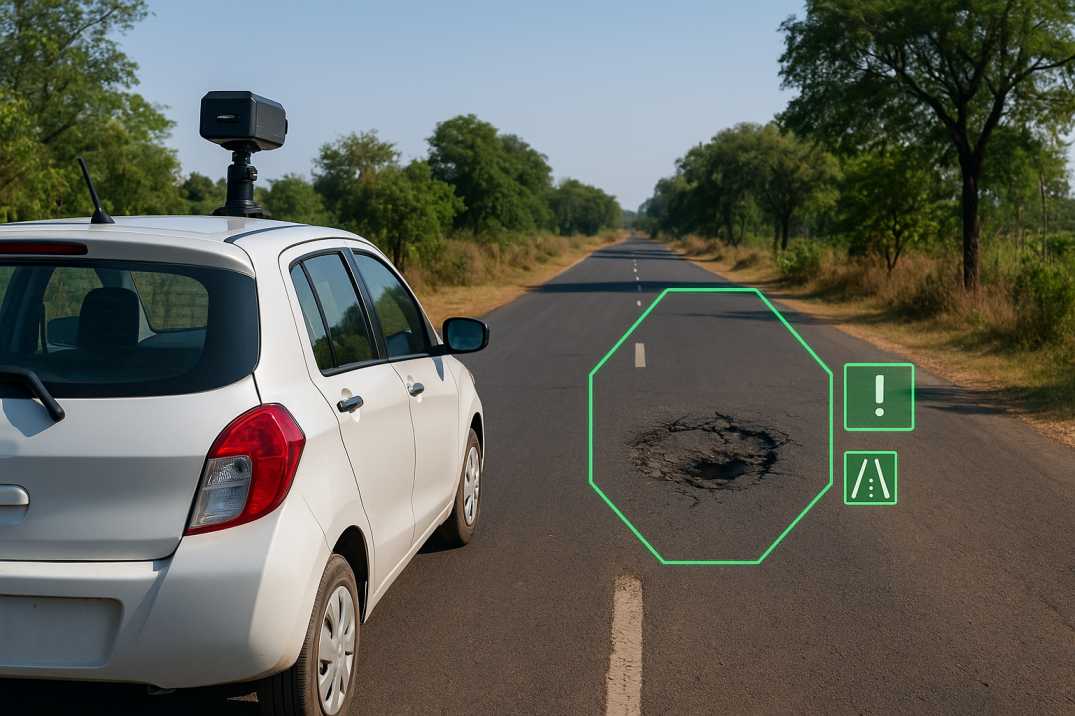Contact Us
RoadVision AI
Private Limited
Office No. 308 & 310, B Block
Ansal Chamber - 1, Bhikaji Cama Place,
Near Engineers India Limited (EIL) Bhawan, New Delhi - 110066
© 2024 | RoadVision AI | All rights reserved
The IRC SP 20: Rural Roads Manual is the cornerstone document guiding rural road design, construction, and maintenance in India. With the push for all-weather connectivity under PMGSY and state programs, the role of digital monitoring has grown critical in ensuring construction quality, safety, and long-term performance. Leveraging technologies such as AI road condition monitoring, automated pavement condition survey, and Dashcam based AI road survey allows agencies to implement the IRC SP 20 requirements efficiently.
In the context of road asset management India, these technologies not only ensure compliance but also provide actionable insights for better decision-making and resource allocation.

IRC SP 20 emphasizes systematic quality control from project initiation to post-construction maintenance. For rural roads, this involves:
Traditionally, quality checks were manual, periodic, and prone to human error. The integration of digital traffic survey and AI-based inspection tools changes this landscape entirely.
AI road condition monitoring involves the continuous collection and analysis of pavement health data using mounted sensors, cameras, and machine learning algorithms. When applied in rural road contexts, especially under IRC SP 20, the benefits include:
The automated pavement condition survey uses high-resolution imaging, LiDAR, and AI to deliver rapid, objective assessments. For IRC SP 20 compliance, this method supports:
This approach aligns with the manual’s recommendation for systematic, repeatable data collection to support road safety audits.
A Dashcam based AI road survey offers an economical, scalable option for rural agencies. By mounting AI-enabled cameras on inspection or operational vehicles, real-time defect detection can be achieved without dedicated survey runs. This method:
Road asset management India requires that every asset, whether a rural road, culvert, or safety feature, be tracked, evaluated, and maintained proactively. The combination of AI condition monitoring, automated surveys, and digital traffic systems ensures:
One of the major challenges in rural road projects is ensuring that construction quality matches specifications. Digital monitoring tools provide:
Under the IRC SP 20 framework, the shift from manual inspections to digital monitoring is not just a technological upgrade—it is a strategic move toward safer, more durable, and cost-effective rural road infrastructure. Leveraging AI road condition monitoring, automated pavement condition survey, and Dashcam based AI road survey enables agencies to meet quality targets, reduce lifecycle costs, and deliver lasting value to rural communities.
RoadVision AI is transforming infrastructure development and maintenance by harnessing AI in roads to enhance safety and streamline road management. Using advanced roads AI technology, the platform enables early detection of potholes, cracks, and surface defects through precise pavement surveys, ensuring timely maintenance and optimal road conditions. Committed to building smarter, safer, and more sustainable roads, RoadVision AI aligns with IRC Codes, empowering engineers and stakeholders with data-driven insights that cut costs, reduce risks, and enhance the overall transportation experience.
Book a demo with us to learn how RoadVision AI can transform your rural road monitoring process in full compliance with IRC SP 20.
Q1: How does IRC SP 20 address rural road quality control?
It prescribes systematic inspection, material testing, and periodic maintenance to ensure durability and safety.
Q2: Why use AI for rural road monitoring?
AI delivers faster, more accurate defect detection and supports proactive maintenance planning.
Q3: Is Dashcam-based AI survey reliable for compliance?
Yes, when properly calibrated, it meets IRC SP 20’s data accuracy and documentation requirements.